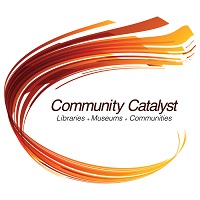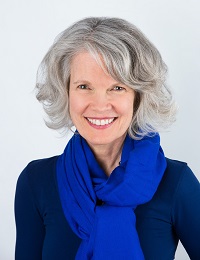Blog Posts | January 10, 2017
Share This
Editor’s Note: This past fall, IMLS launched Community Catalyst, a new initiative aimed at sparking a conversation around ways to help libraries and museums develop a deeper understanding of the best ways to work with communities to bring about positive change. Through a cooperative agreement with Reinvestment Fund, the agency scanned the literature and gathered input from the library, museum, and community revitalization fields. The results of that scan are part of a newly released report (PDF, 28MB). This is the first in a series of blogs this month highlighting the initiative.
By Dr. Kathryn K. Matthew
Director, IMLS
One of the joys of working at IMLS is being able to look across the Library, Archives, and Museum (LAM) fields and see what sometimes those toiling away in a single spot can’t yet see. Through our grant programs we interact with organizations across the country in different types of communities with different constituencies, challenges, and cultures. But here is what makes it really fun. We see trends emerging even before they have come together with a common name. We see really different communities addressing shared challenges in convergent ways. That coming together of ideas makes our heads swim, our palms slap our foreheads, and we blurt out…“now I get it.”
The Community Catalyst initiative is one of these “many paths but all the same direction” things. We have, through Town Hall-like gatherings, seen threads intertwine to make a fabric. But I am getting ahead of myself.
My aim through this blog series is to familiarize you with some of the current thoughts and terminology in community design work led by LAM organizations. At IMLS, we look forward to further strengthening and investing in the field by building capacity and sharing knowledge through communications and connections. Today I want to tell you what we have seen and what we see ahead.
LAM institutions have long served as hubs for the public to engage in informal learning, to access collections for educational or aesthetic purposes, and to participate in civic dialogue. Across the country, changing community needs and changing priorities along with new modes of engagement have created an imperative to connect more meaningfully. LAMs are answering this imperative by going beyond traditional institutional formats and settings.
In our meetings with LAM leaders and constituents, we hear often that there is a need for building new skills and using new tools to understand opportunities and evaluate progress. We also hear about cultural shifts in the way LAM institutions support staff and engage and serve their communities. Within this context, community-focused work covers a broad array of activities including neighborhood infrastructure development, arts-focused place-making, encouragement of higher levels of educational attainment, networks of afterschool and summer programs to reach opportunity-youth, and new services for veterans. We also notice that in parallel fields such as private philanthropy and community development, new methods are being deployed to more deeply interact with and draw out conversations from communities to sustain the process of change.
This Community Catalyst initiative is our way of more precisely visualizing these converging lines of thought. We would like to strengthen the work of LAM organizations (that is part of our mission); to embolden you to connect in new and deeper ways, to strengthen your role within social and institutional networks that support community well-being, and to become catalysts in sparking positive change. To do that will require new grant programs, new ways of selecting grantees, and, frankly, new ways of thinking about the role of IMLS.
To start the effort, IMLS partnered with Reinvestment Fund and the University of Pennsylvania’s Social Impact of the Arts Project to survey how libraries, archives and museums are addressing community challenges. You will hear much more about that partnership in later blog posts, but the upshot from that partnership and a subsequent September Town Hall meeting (an effort which included the William Penn Foundation) is that the convergence of ideas is real. (More about that later as well but for those of you who like to read ahead, here is the report PDF, 28MB.)
The environmental scan and Town Hall interactions revealed that several areas were ripe for further investigation: how does one go about engaging the community; how are lasting partnerships developed; what is being done to evaluate the true impact; and are LAMs ready for deeper community work? We will report on the results of those conversations in future blogs over the coming weeks.
Right now we recognize several fuzzy, but emerging themes or threads:
- Many institutions recognize the difference between being an anchor and being a catalyst, but choosing one path over the other and executing effectively once the choice is made can be challenging. (We’ll be parsing that out in a future blog)
- Few institutions are using techniques drawn from other fields to proactively assess opportunities, map community assets, and convene stakeholders to collaboratively create a vision for change. We need to borrow from the known successes of others.
- Catalytic work requires moving beyond providing services or programs to changing the processes by which we work together with our communities.
- Catalytic work requires moving from attribution to contribution, which means creating a culture of shared responsibility and goals with other like-minded organizations and individuals.
- Working as part of a community ecosystem to achieve long-term, interconnected outcomes usually requires a special effort to educate board members and funders who seek evidence of short-term impact. Not every successful effort will be successful from day one.
- Many LAMs are not ready to identify what types of partnerships are required for different types of community work, and also are not ready to monitor and adjust those partnerships through the project’s lifecycle.
In closing, perhaps one Town Hall participant summed it up best when she wrote:
“It [meaning the Town Hall] has empowered me already to make many changes in my approach. The encouragement and focus of the other participants as well as the outstanding presenters made me realize this is a movement, not just us toiling away…alone."
She gets it. It is not just me, she gets it too. You can almost see her doing the palm slap.
Check back next week for another installment in this series.

About the Author
Dr. Kathryn K. Matthew was confirmed by the Senate in September 2015 as the 5th director of the Institute of Museum and Library Services. You can send her comments on the Community Catalyst Initiative by emailing communities@imls.gov
